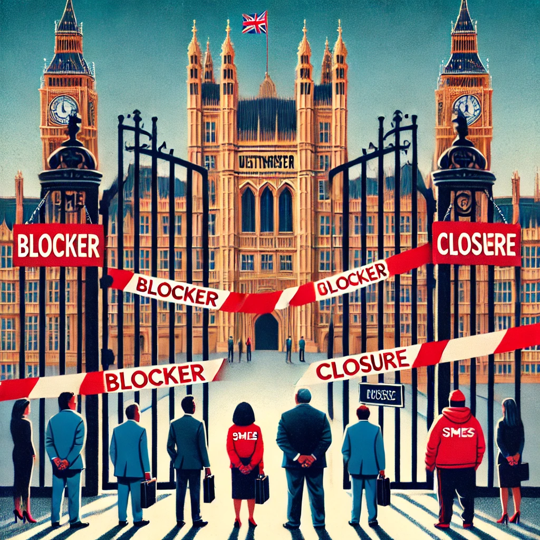The UK government has repeatedly stated its commitment to increasing public sector spending with SMEs and businesses led by ethnic minority entrepreneurs. Yet, despite these pledges, many smaller and minority-led businesses still struggle to secure public sector contracts.
The process remains complex, bureaucratic, and often biased towards larger, well-established firms. In this blog post, we explore the barriers SMEs and ethnic minority-run businesses face in tendering for public sector contracts and what can be done to create a fairer and more accessible system.

- The Complexity of the Tendering Process One of the biggest hurdles SMEs and ethnic minority-owned businesses face is the highly complex and resource-intensive tendering process. Public sector contracts often come with lengthy and complicated application procedures, requiring significant financial and administrative expertise. Larger firms have entire teams dedicated to bid writing, while SMEs frequently lack the in-house resources to navigate these processes effectively.
- Lack of Access to Information and Networks Many SMEs and minority-run businesses are unaware of the available opportunities or struggle to find relevant tenders. Information about procurement opportunities is often scattered across multiple platforms, making it difficult for smaller businesses to identify relevant contracts. Additionally, networking and relationship-building play a significant role in winning public contracts, but minority-led businesses may not have the same access to influential industry circles as their larger competitors.
- The Challenge of Meeting Pre-Qualification Criteria Public sector tenders frequently require businesses to demonstrate extensive track records, financial stability, and compliance with strict regulatory requirements. This puts newer and smaller firms at a disadvantage, as they may not have the years of experience or the financial reserves required to meet these criteria, even if they are perfectly capable of delivering high-quality services.
- Implicit Bias and Lack of Diversity in Procurement Although the government has set diversity targets, the reality is that many procurement processes still lack inclusivity. There is often an unconscious preference for larger, more established suppliers with whom procurement officers feel comfortable. Additionally, procurement teams themselves may not reflect the diversity of the businesses they are evaluating, leading to systemic barriers for ethnic minority entrepreneurs.
- Late Payments and Cash Flow Struggles Another major challenge for SMEs is cash flow management. Public sector contracts often involve long payment terms, sometimes exceeding 60 to 90 days. For smaller businesses that rely on steady cash flow to survive, such delays can be crippling. While government initiatives like the Prompt Payment Code exist, adherence is inconsistent, leaving many small businesses struggling to balance their finances while delivering on contracts.
- Limited Government Support and Advocacy While government policies express support for SMEs and minority-led businesses, many entrepreneurs feel that actual support mechanisms are lacking. Training, mentoring, and funding programmes are often inaccessible or insufficiently promoted. Without proper advocacy and targeted support, the barriers to entry remain high for smaller businesses trying to enter the public procurement space.
Solutions for a More Inclusive Procurement Process To address these challenges, the government and public sector bodies must take proactive steps to make procurement more inclusive and SME-friendly:
- Simplify the tendering process: Reducing administrative burdens and creating a more SME-friendly application system would encourage more businesses to participate.
- Improve outreach and support: Providing clear, centralised access to tendering opportunities and offering targeted training for SMEs and minority-run businesses can help bridge the knowledge gap.
- Revise qualification criteria: Adjusting criteria to recognise potential and innovation rather than just financial history and experience would level the playing field.
- Promote diversity in procurement teams: Ensuring procurement decision-makers reflect diverse backgrounds can help eliminate bias in supplier selection.
- Enforce fair payment terms: Strengthening policies around prompt payments can prevent SMEs from suffering financially when working on public contracts.
Conclusion While the UK government has set ambitious goals for supporting SMEs and ethnic minority-led businesses, real change requires more than just policy statements. By removing barriers and creating a genuinely inclusive procurement process, the public sector can unlock the full potential of diverse businesses, drive innovation, and promote economic growth. It’s time for action, not just promises.


